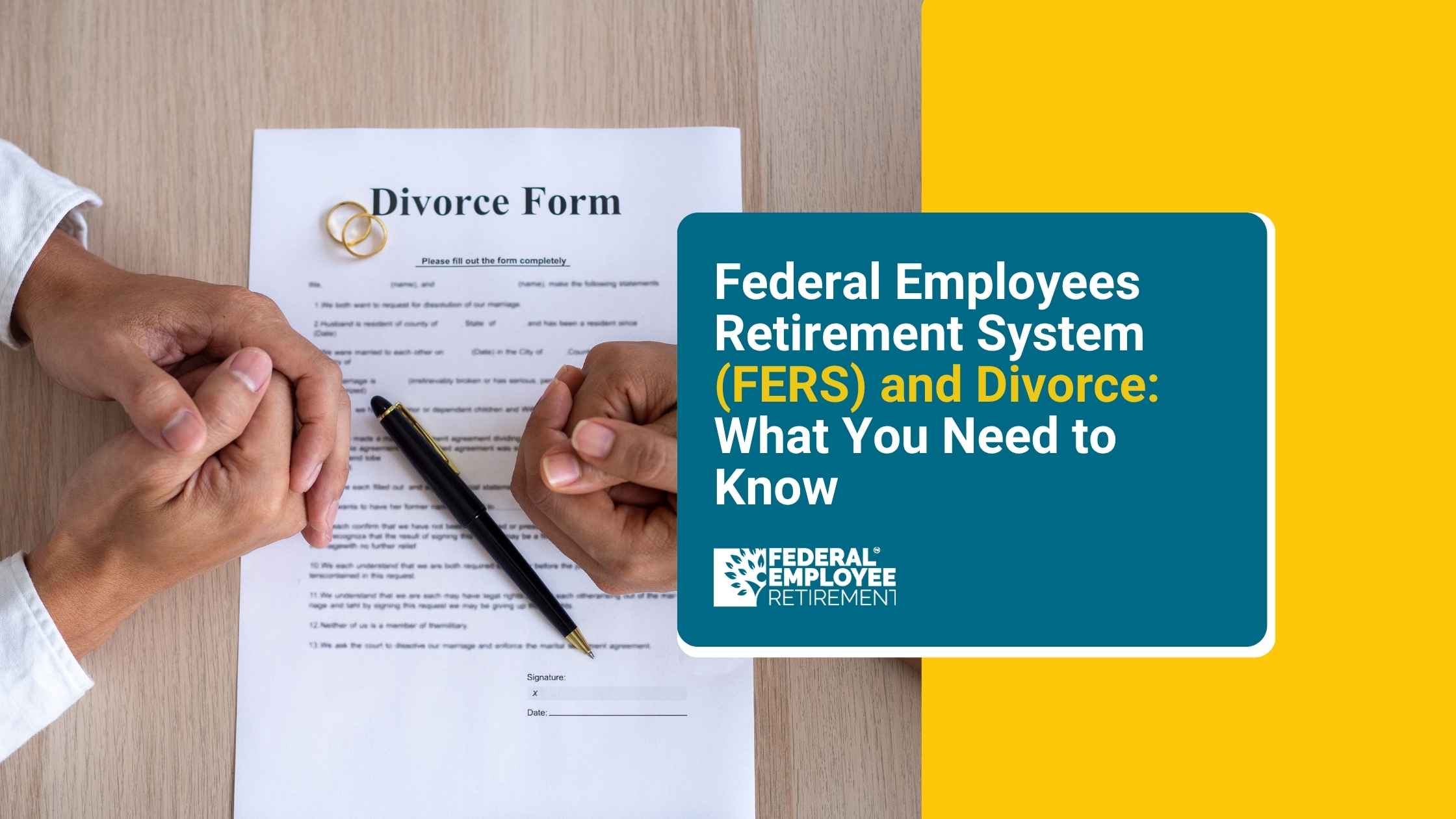You’re not alone; 4,359 federal employees booked their free review.

Federal Employees Retirement System (FERS) and Divorce: What You Need to Know
Navigating divorce is never easy especially when federal benefits like FERS are involved. The Federal Employees Retirement System (FERS) is a cornerstone of federal retirement, and divorce can complicate how those benefits are divided, accessed, and taxed.
This blog breaks down everything federal employees and their spouses need to know about FERS during a divorce, including how the benefits are divided, what court orders are needed, and what happens to survivor benefits. Let’s dive in.
What Is FERS and Why It Matters in Divorce
FERS (Federal Employees Retirement System) is a three-part retirement program that includes:
- Basic Benefit Plan
- Social Security
- Thrift Savings Plan (TSP)
In a divorce, all three components may be subject to division depending on the court's ruling and the applicable state law.
How Are FERS Benefits Divided During Divorce?
FERS benefits are considered marital property and may be divided during divorce proceedings. The exact amount depends on several factors, including the length of the marriage and the court’s decision.
Real-Life Example:
If a federal employee worked for 30 years and was married for 15 of those years, the court may decide that the former spouse is entitled to 50% of the retirement earned during those 15 years.
What Is a Court Order Acceptable for Processing (COAP)?
To divide FERS benefits, a Court Order Acceptable for Processing (COAP) is required. This legal document, issued by a court, outlines how the federal retirement benefits should be split.
COAP must:
- Be specific about the percentage or formula used
- Include survivor benefit elections if applicable
- Be submitted to the Office of Personnel Management (OPM)
Can a Former Spouse Get Survivor Benefits?
Yes, but only if the COAP or divorce decree specifically grants survivor benefits. If not properly addressed, the former spouse may receive a share of the retirement while losing access to survivor benefits after the employee’s death.
Tip:
A maximum of 50% of a FERS annuity can be allocated as a survivor benefit to a former spouse.
Thrift Savings Plan (TSP) and Divorce
The TSP functions like a 401(k) and is also considered marital property. It can be divided through a Retirement Benefits Court Order (RBCO), which must:
- Be clear and unambiguous
- State how the account is to be divided
- Be approved by the TSP agency
Tax Implications of Dividing FERS Benefits
While dividing retirement benefits, it’s essential to consider tax implications:
- Payments made directly to the former spouse are generally taxable to the recipient
- Early withdrawals from TSP may be subject to penalties unless properly rolled over
Always consult a tax professional before agreeing to any division of assets.
FERS Supplement Calculator
Why State Laws Matter
Federal retirement systems like FERS follow federal rules, but the division of marital property is determined by state law. This means:
- One state may allow a 50/50 division
- Another may apply a different formula based on contribution years during marriage
Working with a divorce attorney familiar with both federal and your specific state’s laws is crucial.
Final Thoughts
Divorce can make navigating federal benefits complicated, but with the right planning and legal documentation, you can ensure a fair outcome. From survivor benefits to COAP filings, every detail matters.
By understanding your rights and responsibilities under the Federal Employees Retirement System, you can protect your retirement and plan for a stable financial future.
For more clarity and support, always consult a federal benefits specialist or attorney experienced in divorce law.
Looking for more retirement planning advice? Explore our library of guides tailored for federal employees and their families.
FAQs
1. How does divorce affect federal retirement?
Divorce can impact a federal employee’s pension, TSP, and survivor benefits. A court order can award a portion of these benefits to a former spouse, but it must be legally documented.
2. What happens to a retirement plan in a divorce?
Federal retirement plans like FERS and TSP may be divided in divorce. A court order determines what share, if any, a former spouse receives.
3. How to divide FERS pension in divorce?
You’ll need a Court Order Acceptable for Processing (COAP) that outlines how the FERS pension should be divided. It must meet OPM’s legal requirements.
4. Does my ex-wife get half of my retirement?
Not by default. Whether and how much your ex-spouse receives depends on the court order and the details of your divorce settlement.


Get Updated
Subscribe to our weekly updates for the latest on retirement planning, federal benefits, exclusive webinars, and more!
Download Federal Retirement: Step-by-step Checklist
This comprehensive guide will help you understand your federal benefits, optimize your savings, and plan for a comfortable future.



.png)








